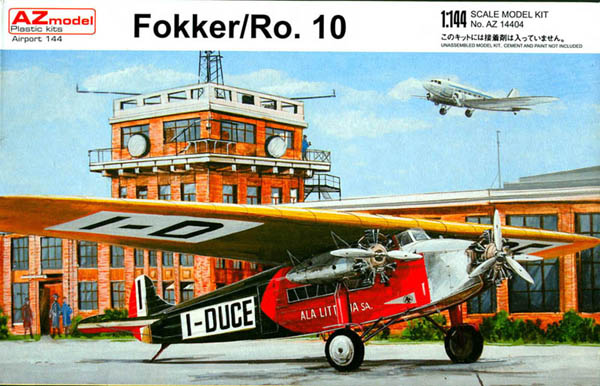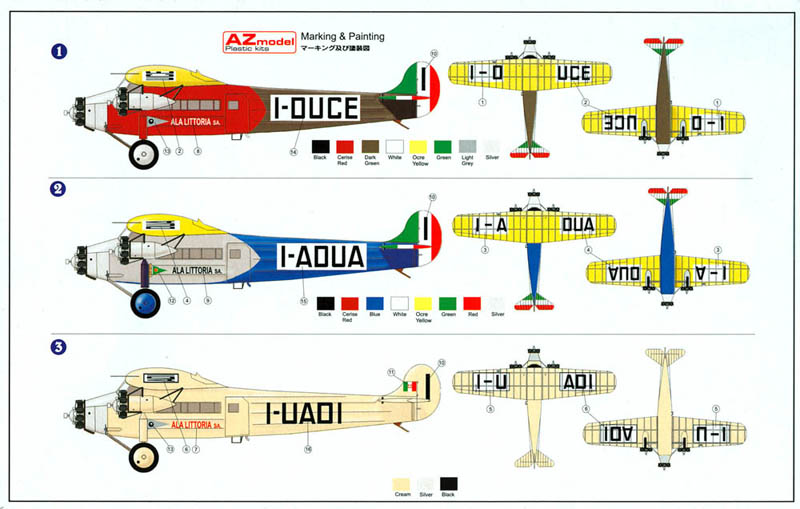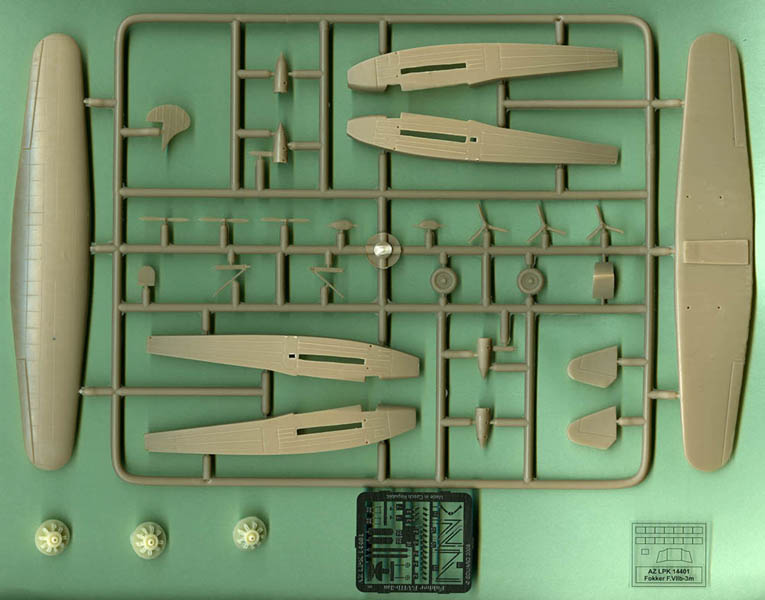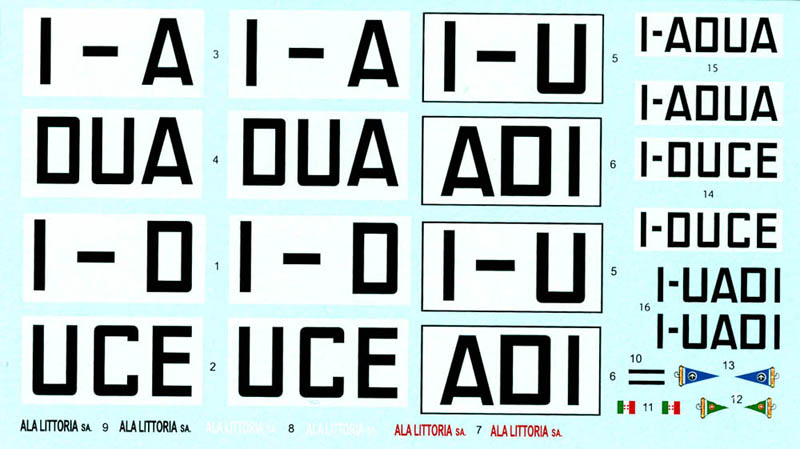
AZ Models 1/144 Fokker/Ro. 10
By Jim Schubert
History
 Fokker Tri-Motors were license built in Belgium, Czechoslovakia, Italy, Poland, Spain, the UK and the USA. The history of these planes is a long and fascinating tale best told elsewhere. Suffice it to say here that three, designated Ro. 10, were built in Italy by Industrie Mechaniche e Aeronautiche Meridionali - Romeo; better know to us as IMAM-Ro. All three were, apparently, initially sold to Swissair and later to Ala Littoria, SA. In which markings they are presented in this kit.
Fokker Tri-Motors were license built in Belgium, Czechoslovakia, Italy, Poland, Spain, the UK and the USA. The history of these planes is a long and fascinating tale best told elsewhere. Suffice it to say here that three, designated Ro. 10, were built in Italy by Industrie Mechaniche e Aeronautiche Meridionali - Romeo; better know to us as IMAM-Ro. All three were, apparently, initially sold to Swissair and later to Ala Littoria, SA. In which markings they are presented in this kit.
It is interesting to note the brief history in the kit instructions is taken verbatim from Wikipedia.
The Kit
 This is one of four kits of the Fokker Tri-Motor in AZ's Airport 144 Series; kits 14401, 02 and 03 have markings for Avia & Fokker civil, Avia & Fokker military and Avro 618 “10” respectively. I suspect the only differences are the decals and the colors and markings instructions.
This is one of four kits of the Fokker Tri-Motor in AZ's Airport 144 Series; kits 14401, 02 and 03 have markings for Avia & Fokker civil, Avia & Fokker military and Avro 618 “10” respectively. I suspect the only differences are the decals and the colors and markings instructions.
27 parts are cleanly injection-molded in pale brown styrene. Three engines are sharply cast in pale cream resin but with a large pour-block on the back that will take a lot of work to remove cleanly. An Eduard PE sheet containing 31 parts is also included. Windows and a windscreen are printed on thin clear plastic. The decals, with markings for three Ala Littoria planes,
 are well printed in perfect register. The single sprue-tree of parts includes two complete fuselages appearing, to me, to be identical. The kit includes no exhaust collectors or pipes; the instructions advise these are to be made of wire.
are well printed in perfect register. The single sprue-tree of parts includes two complete fuselages appearing, to me, to be identical. The kit includes no exhaust collectors or pipes; the instructions advise these are to be made of wire.
Nit Picks
1. Stringers on the fuselage sides are a bit overdone.
2. There are no stringers molded on either the top or the bottom of the fuselage. There should be three on top from the Wing TE aft and three on the bottom from the rear of the aluminum nose skin aft.
3. If the clear plastic windows are installed from the inside as the instructions show you will have an unrealistically thick recess all the way round them due to the thickness of the fuselage. I'd advise making neatly fitting inserts of about .020”, or thicker, clear styrene to be installed after the model is painted. The windows on the original were essentially flush with the fuselage sides.
4. The propeller blades are overly thick and need to be thinned and the hub detail needs to be refined.
5. Although the PE sheet includes control horns, the instructions don't show the external control cables and cranks.
6. The instructions call for the wings of two of the optional liveries to be Ocre Yellow. In reality they were clear varnished birchwood.
Conclusions
My nit picks aside, If you build this kit OOB, with appropriate attention given to installation of the windows, you'll have a very attractive model well representative of the Fokker F.VIIb/3m transport.
Hannants list the kits for 15.31 pounds; ~ $23.00
My thanks to AZ Model for providing the kit for this review.
References
- Aeroplane Monthly, May 1984, John Stroud's series Wings of Peace.
- Skyways the Journal of the Airplane 1920-1940, Nos. 65 & 66, January & April 2003. Two part article on the Josephine Ford by Richard S. Allen.
